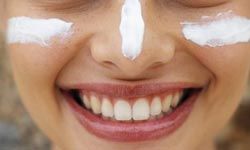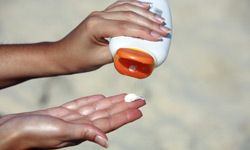The sun can do much more damage than simply give you a painful sunburn. Dermatologists (skin doctors) say that prolonged exposure to sunlight causes brown spots; red, scaly spots; drying and wrinkling; and, worst of all, skin cancer.
But how do you avoid the sun? That's tricky. Sometimes, your day at the beach may turn out to be much more sunburned than sand-filled. If your skin doesn't produce the protective melanin pigment well or if you're exposed to the sun before enough pigment can be manufactured and dispersed, the ultraviolet rays kill skin cells. Even a mild sunburn that produces only a little redness destroys the top layer of your skin, just as if you had seared it with a hot iron.
Advertisement
Despite these increasingly well-known dangers of sun exposure, many of us, on occasion, get lazy when it comes to protecting our skin or just can't resist the myth that getting some color from the sun makes us look healthier. On the next few pages, learn some ways to easily minimize sun exposure so you can spend time outdoors safely.










